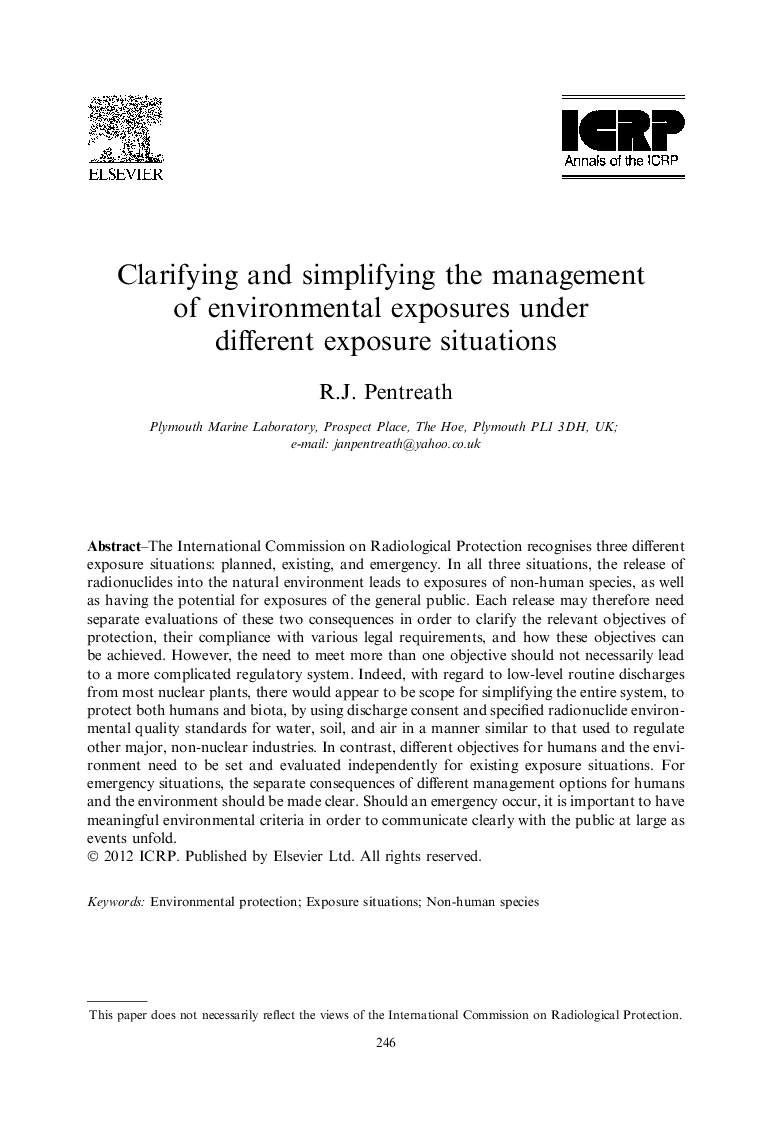| Article ID | Journal | Published Year | Pages | File Type |
|---|---|---|---|---|
| 1878543 | Annals of the ICRP | 2012 | 10 Pages |
Abstract
The International Commission on Radiological Protection recognises three different exposure situations: planned, existing, and emergency. In all three situations, the release of radionuclides into the natural environment leads to exposures of non-human species, as well as having the potential for exposures of the general public. Each release may therefore need separate evaluations of these two consequences in order to clarify the relevant objectives of protection, their compliance with various legal requirements, and how these objectives can be achieved. However, the need to meet more than one objective should not necessarily lead to a more complicated regulatory system. Indeed, with regard to low-level routine discharges from most nuclear plants, there would appear to be scope for simplifying the entire system, to protect both humans and biota, by using discharge consent and specified radionuclide environmental quality standards for water, soil, and air in a manner similar to that used to regulate other major, non-nuclear industries. In contrast, different objectives for humans and the environment need to be set and evaluated independently for existing exposure situations. For emergency situations, the separate consequences of different management options for humans and the environment should be made clear. Should an emergency occur, it is important to have meaningful environmental criteria in order to communicate clearly with the public at large as events unfold.
Related Topics
Physical Sciences and Engineering
Physics and Astronomy
Radiation
Authors
R.J. Pentreath,
